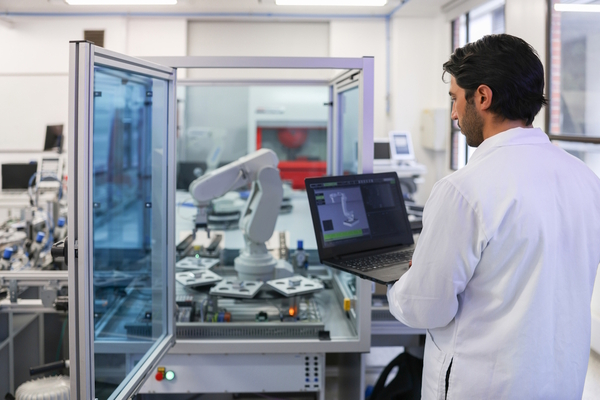Driving business growth with Wi-Fi 6e and 7

Serge Denizyaran at Systal explores the Wi-Fi advancements shaping the technologies of the future
We’re entering the next phase of wireless connectivity as technologies like Wi-Fi 6E, and the integration of Artificial Intelligence, all start to be implemented by businesses, changing how we interact with and manage our networks.
The need for WLAN estate management has never been more vital as Wi-Fi increasingly becomes the fundamental foundation of our connected world. Wi-Fi 6E and the emergence of Wi-Fi 7 is the latest and greatest in the world of wireless connectivity, so let’s explore the significant performance, speed and reliability advances that come with this new generation of Wi-Fi.
Greater throughput and security with Wi-Fi 6E
Wi-Fi 6E extends Wi-Fi 6 into the 6 GHz band, bringing enhanced capacity, reliability and security with it. This advancement provides wider channels and less congestion than previous generations, effectively doubling bandwidth.
The 6 GHz spectrum and its speed, capacity and latency improvements will be crucial for enterprises to support new use cases that demand substantial resources and seamless connectivity.
Wi-Fi 6E also brings advanced security protocols with the introduction of WPA3, which will unlock new opportunities for innovation across industries like healthcare, retail, logistics and education while its extremely high throughput speeds and lower latency will help AI, XR and IoT technologies to become even more mainstream.
The role of AI in managing Wi-Fi
Alongside the advancements of Wi-Fi 6E, the integration of AI in managing Wi-Fi systems represents a fundamental change to optimisation and performance monitoring. AI-driven solutions such as Cisco DNAC and Juniper MIST enable organisations to proactively identify issues and risks because of the real-time insights, prediction and analytics these solutions provide.
In most cases, AI systems offer self-healing processes for minor incidents. With the help of automation and AI, self-healing networks can detect, remediate and even predict network problems, leaving managed services to focus on critical systems and service restoration.
AI systems process large amounts of networking data to enhance configurations, manage bandwidth and prevent interference. Machine Learning adjusts to the changing conditions of Wi-Fi networks, guaranteeing seamless connectivity and optimal service use.
By automating tasks such as dynamic channel allocation and load balancing, AI-driven Wi-Fi management simplifies routine operations and lessens the load on managed services, resulting in a more flexible and robust Wi-Fi infrastructure.
Into the future with Wi-Fi 7
Though Wi-Fi 6E and AI have been revolutionary, the advancements continue with Wi-Fi 7. This next-generation technology offers significant improvements over its predecessors and brings with it extremely high throughput, the ability to transmit data to multiple devices simultaneously, and improved spectral efficiency.
Wi-Fi 7 is designed to push the limits of wireless performance even further, dramatically boosting throughput and minimising latency, with considerable enhancements made in both the PHY and MAC layers.
Key technical spec improvements include:
- 320 MHz bandwidth
- 4094 QAM modulation
- Multi-Link Mechanism
- Multi-AP Coordination
- Low latency
- Increased scalability
- Backward compatibility
Upgrading to Wi-Fi 7 will impact real-world use cases in a practical, clear way. For example, industrial IoT, streaming services, video conferencing, real-time collaboration, AR/VR/XR, telemedicine, cloud/edge computing, and online gaming will benefit from Wi-Fi 7’s advances in wireless technology.
In the rapidly evolving world of wireless connectivity, Wi-Fi 6E, AI-driven network management and Wi-Fi 7 represent crucial steps towards greater efficiency and innovation.
Enterprises across multiple industries stand to gain from enhanced reliability, security and performance by making the most of these transformative technologies because these advanced wireless technologies open the door for groundbreaking developments in immersive technologies, IoT integration and real-time collaboration.
In summary, these wireless innovations represent an opportunity for businesses to drive growth, position themselves at the forefront of technology and shape a future defined by agility and unmatched connectivity.
Serge Denizyaran is Principal Network Architect at Systal
Main image courtesy of iStockPhoto.com and greenbutterfly

Business Reporter Team
Most Viewed
Winston House, 3rd Floor, Units 306-309, 2-4 Dollis Park, London, N3 1HF
23-29 Hendon Lane, London, N3 1RT
020 8349 4363
© 2024, Lyonsdown Limited. Business Reporter® is a registered trademark of Lyonsdown Ltd. VAT registration number: 830519543





